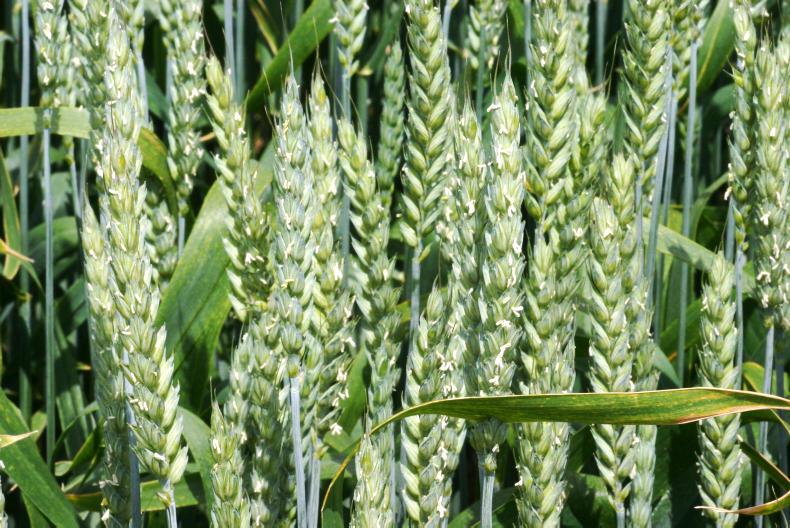Most winter wheat crops are now at the T3 (early flowering) fungicide stage. Final sprays will be triazole mixtures like Prosaro, Gleam or Magnello. Chlorothalonil might be included if septoria is bad but it may have little direct benefit to the current crop. Inclusion of a strobilurin is questionable but can help in stress conditions.
Apply the T2 fungicide to spring barley as awns begin to appear. Some crops are sprayed – others are still a bit away. Fungicide options include Bontima, Ceriax, Elatus Era, Fandango and Siltra or triazole combinations with Treoris or a strobilurin. T2 treatments must include a contact (Bravo or Phoenix) for ramularia.
Early spring oat crops are booting with some ears breaking through. Target final oat sprays when the heads are out. This will be a triazole plus strobilurin or SDHI, possibly with a morpholine if mildew is still active. Where there is no mildew consider epoxiconazole or Folicur at 0.7 l/ha, plus half rate Modem or Amistar. If mildew or crown rust are present use Amistar Pro or Jenton with the triazole. Cielex might also be very useful on oats.
There are a few aphids on some wheat crops but treatment may not be worthwhile unless numbers are very high. More often than not, numbers are beaten back by predators. One should not use a pyrethroid for aphids on the head – this needs systemic activity and these actives tend to be much less selective in what they kill. This can leave bounce-back as a real issue due to death of predators. Insecticide use is also of concern when bees are active.
Yellow leaves and BYDV infection
Weather concerns help quality wheat prices
Most winter wheat crops are now at the T3 (early flowering) fungicide stage. Final sprays will be triazole mixtures like Prosaro, Gleam or Magnello. Chlorothalonil might be included if septoria is bad but it may have little direct benefit to the current crop. Inclusion of a strobilurin is questionable but can help in stress conditions.
Apply the T2 fungicide to spring barley as awns begin to appear. Some crops are sprayed – others are still a bit away. Fungicide options include Bontima, Ceriax, Elatus Era, Fandango and Siltra or triazole combinations with Treoris or a strobilurin. T2 treatments must include a contact (Bravo or Phoenix) for ramularia.
Early spring oat crops are booting with some ears breaking through. Target final oat sprays when the heads are out. This will be a triazole plus strobilurin or SDHI, possibly with a morpholine if mildew is still active. Where there is no mildew consider epoxiconazole or Folicur at 0.7 l/ha, plus half rate Modem or Amistar. If mildew or crown rust are present use Amistar Pro or Jenton with the triazole. Cielex might also be very useful on oats.
There are a few aphids on some wheat crops but treatment may not be worthwhile unless numbers are very high. More often than not, numbers are beaten back by predators. One should not use a pyrethroid for aphids on the head – this needs systemic activity and these actives tend to be much less selective in what they kill. This can leave bounce-back as a real issue due to death of predators. Insecticide use is also of concern when bees are active.
Yellow leaves and BYDV infection
Weather concerns help quality wheat prices






 This is a subscriber-only article
This is a subscriber-only article










SHARING OPTIONS: